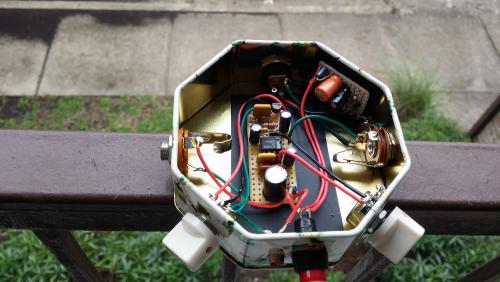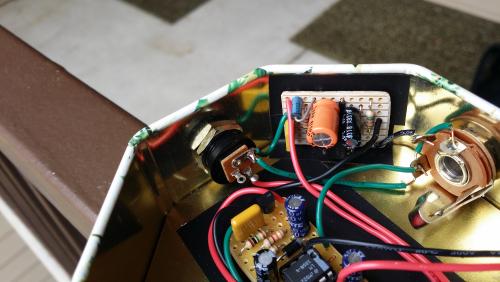Re: Marshall Speaker Reactance Emulator
Posted by induction on Jun 06, 2016; 4:20pm
URL: http://guitar-fx-layouts.238.s1.nabble.com/Marshall-Speaker-Reactance-Emulator-tp31283p31292.html


URL: http://guitar-fx-layouts.238.s1.nabble.com/Marshall-Speaker-Reactance-Emulator-tp31283p31292.html
According to the patent, it's purpose is to make a solid state amplifier sound more like a tube amplifier. To be more specific, the gain of a solid state power amplifier (no output transformer, lots of negative feedback) is largely independent of frequency, while the gain of a tube power amp (output transformer, especially one with little or no negative feedback) depends on the impedance of the load. The impedance of a guitar speaker looks like the frequency response curve I posted above, while the impedance of a resistor is frequency-independent. In other words, the frequency response of a tube power amp plugged into a resistor and tapped will be different from the same amplifier plugged into a guitar speaker. So if you tap the OT for a line level output, the sound will depend on whether the power amp is plugged into a speaker or a resistive load. The reactance emulator is just a frequency-dependent gain (aka EQ) that adds the gain characteristics of a tube amp plugged into a speaker back to the sound. It's useful for making solid state amps sound more like tube amps, and for making lineout signals from a tube amp sound more realistic in conjunction with a speaker simulator, but only if the amp is connected to a resistive dummy load instead of a speaker.
Yes, they are completely different circuits. This one is an EQ, the SSS is an overdrive. The point of the SSS is to add clipping, not EQ. If you use both, put the SSS first. EQ after clipping sounds like EQ. EQ before clipping changes the distortion character. The reactance emulator is subtle enough that any clipping that comes after it makes it less effective.
Usually. The basic question to ask is this: Are you playing through a tube amplifier directly connected to a speaker. If no, then use the reactance emulator. If yes, don't. In some cases, you make take a line level signal from a tube amp that's connected to a speaker cabinet, and use the cabinet as an on-stage monitor while sending the line level signal to a PA. In that case, you want a cabinet simulator, but not a reactance emulator (assuming your goal is realism). In another case, you may be reamping or directly recording a lineout from a tube amp with a reactive dummy load. In that case, again, you'll want a cab sim, but no reactance emulator because the reactive dummy load should interact with the OT to provide the signature power tube EQ.
Yes, it's very small. I'm glad you like it. Here's a picture of my Grace amplifier. The amp circuit is the vero in the middle of the enclosure, the reactance emulator is the small one on the side next to the adapter jack.


| Free forum by Nabble | Edit this page |